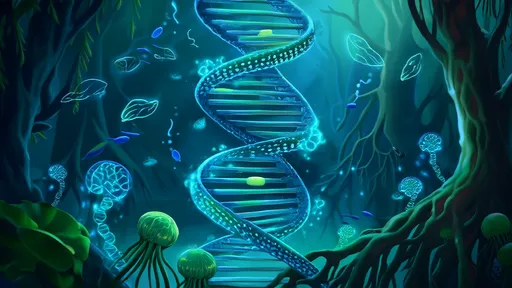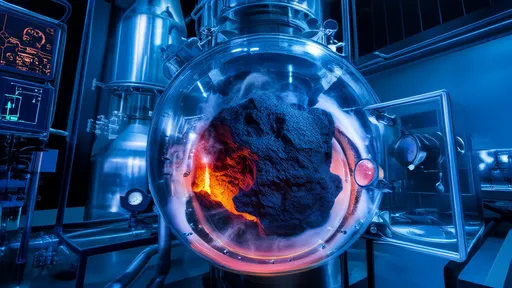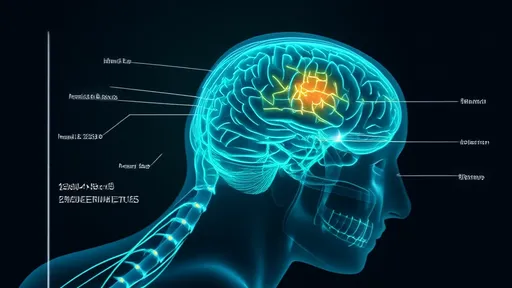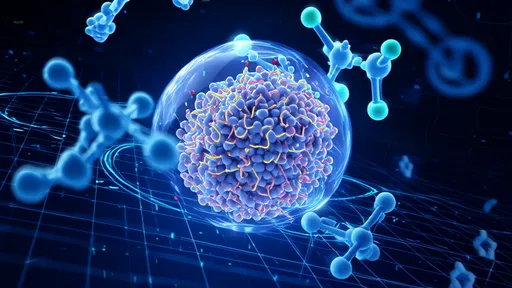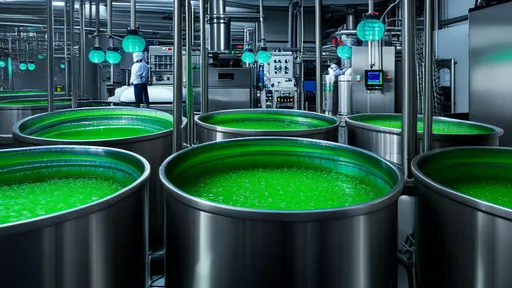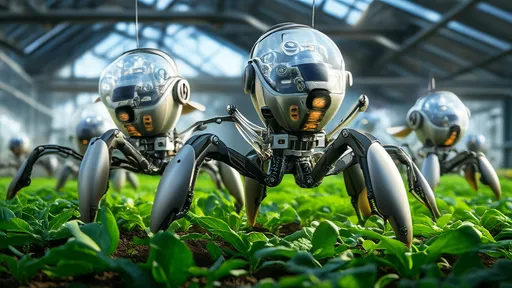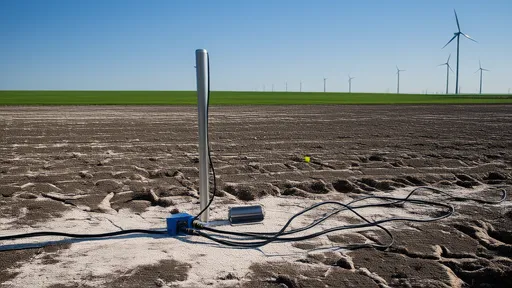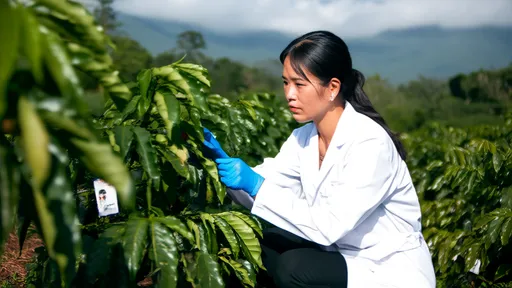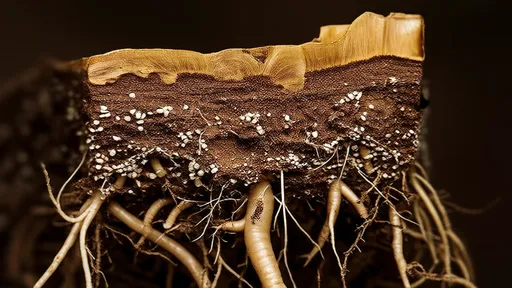The agricultural sector is undergoing a quiet revolution as artificial intelligence merges with robotics to address one of nature's most vital processes: pollination. In fields across the world, experimental deployments of mechanical pollinator swarms are demonstrating how AI-driven vision systems can collaborate to mimic—and potentially enhance—the work of vanishing bee populations. These autonomous systems represent not just a technological breakthrough, but a necessary adaptation to ecological instability.
At the heart of this innovation lies real-time floral recognition. Unlike industrial robots programmed for repetitive factory tasks, pollinator drones must navigate unpredictable outdoor environments where lighting, wind, and plant movement create constant variability. Advanced convolutional neural networks now enable these machines to distinguish between ripe and unripe blossoms with 94% accuracy, even in dense foliage. The implications are profound: during California's 2022 almond bloom, prototype units achieved 60% of natural bee pollination efficiency—a figure projected to reach 85% by 2025.
The true genius of these systems emerges in their swarm intelligence architecture. Individual units communicate through mesh networks, dynamically redistributing across fields based on real-time pollen distribution maps. Researchers at Wageningen University observed an emergent behavior where drones spontaneously formed optimal pollination patterns without central coordination, reminiscent of biological swarm intelligence. This decentralized approach proves particularly effective in polyculture farms, where multiple crop species flower simultaneously.
Agricultural engineers have made significant strides in delicate physical interaction. Early prototypes often damaged petals during pollen collection, but bio-inspired contact mechanisms now replicate the gentle precision of insect legs. The latest Harvard-designed micro-drones utilize electrostatic adhesion to collect pollen grains without physical contact, while Japanese models employ biodegradable gel-coated arms that leave no residue on plants. Such refinements are critical for commercial adoption, as farmers won't tolerate crop damage from the very systems meant to aid production.
Beyond mere bee substitution, these technologies enable precision pollination services previously unimaginable in nature. AI systems can selectively pollinate specific plant varieties in mixed fields, maintain optimal genetic diversity ratios, or even avoid cross-contamination between GMO and organic crops—all while collecting terabytes of phenotypic data. During Australia's 2023 macadamia harvest, targeted pollination boosted nut yields by 22% compared to conventional methods by ensuring optimal flower-to-flower pollen transfer.
The environmental calculus remains complex. While reducing reliance on stressed bee populations, mechanical pollinators currently require lithium batteries and rare-earth magnets. MIT's sustainability team estimates that solar-recharged swarms could lower carbon footprints by 40%, but manufacturing impacts still outweigh natural pollinators' minimal resource needs. Some conservationists warn against treating these systems as a panacea, emphasizing that habitat restoration must accompany technological solutions.
Economic models suggest an inflection point approaching. As system costs dip below $250 per acre annually—projected by 2026—widespread adoption becomes inevitable. The USDA reports that 17% of specialty crop growers now maintain pollinator drone reserves, particularly for high-value crops like cherries and blueberries. In China's Sichuan province, where wild bee populations have collapsed, government subsidies have placed mechanical pollinators in 43% of commercial orchards.
Looking ahead, the convergence of robotics, ecology, and AI promises more than just agricultural efficiency. These systems may pioneer new forms of human-environment interaction, where technology doesn't replace nature but collaborates with it. As climate change reshapes global ecosystems, such adaptable solutions could mean the difference between food security and crisis. The mechanical pollinators buzzing through today's test fields carry not just pollen, but the seeds of a more resilient future.
The rhythmic lapping of brackish water against tangled mangrove roots conceals one of nature's most extraordinary genetic survival stories. For centuries, these salt-tolerant trees have guarded molecular secrets in their DNA that allow them to thrive where other plants perish. Today, scientists are cracking open this genetic vault through an ambitious international initiative called the Mangrove Gene Bank Project, with groundbreaking implications for global food security.
In the face of accelerating glacial melt due to climate change, scientists and engineers are turning to innovative solutions to slow the disappearance of these critical ice reserves. One such breakthrough is the development of high-albedo fabric covers, colloquially termed "glacial nanoblankets," designed to reflect sunlight and reduce ice ablation. These advanced textiles are emerging as a promising tool in the fight against rising sea levels and ecosystem disruption.
In the race to mitigate climate change, scientists and engineers are turning to the Earth’s own geological processes for solutions. One of the most promising avenues is basalt carbon mineralization, a natural chemical reaction that locks away carbon dioxide in solid rock. This process, often described as nature’s own carbon capture and storage (CCS) system, is now being harnessed and accelerated to combat rising atmospheric CO₂ levels. Unlike traditional carbon storage methods, which rely on fragile seals and uncertain long-term stability, basalt mineralization offers a permanent and geologically secure solution.
The concept of marine cloud brightening through aerosol seeding has emerged as a potential geoengineering strategy to combat global warming. By enhancing the reflectivity of clouds over oceans, scientists aim to increase Earth's albedo, thereby cooling the planet. This approach, while still in experimental stages, has garnered significant attention due to its promise of offsetting some effects of climate change without requiring drastic reductions in greenhouse gas emissions.
For decades, the study of chronic pain has been hampered by the inability to observe neural activity over extended periods. Traditional imaging techniques provide snapshots of brain activity but fail to capture the dynamic, evolving nature of pain processing. A groundbreaking approach using transparent skull implants is now revolutionizing our understanding of how chronic pain manifests and persists in the brain.
In the perpetual darkness of the deep sea, hydrothermal vents spew superheated, mineral-rich fluids into the frigid water, creating oases of extreme chemistry that have fascinated scientists for decades. These underwater geysers, often located along mid-ocean ridges, host complex reactions that may hold clues to the origins of life and the formation of mineral deposits. Until recently, studying these dynamic systems in their natural state posed immense challenges—until the advent of deep-sea chemical robots capable of in situ monitoring.
In a groundbreaking development that merges cutting-edge physics with ancient archaeology, researchers have successfully utilized neutron holography to reveal hidden inscriptions beneath the patina of bronze artifacts. This non-invasive technique promises to revolutionize the study of corroded metal objects, offering unprecedented access to historical texts without damaging delicate surfaces.
The advent of cryo-electron microscopy (cryo-EM) coupled with artificial intelligence (AI) has revolutionized the field of structural biology. By capturing the intricate dance of proteins in their native states, scientists are now able to unravel the dynamic architectures that govern cellular functions. This powerful synergy between cutting-edge imaging and machine learning is not just a technological leap—it’s a paradigm shift in understanding life at the molecular level.
The world of ultrafast spectroscopy has entered a revolutionary phase with the advent of attosecond spectral knives—a cutting-edge tool that enables scientists to selectively excite specific vibrational states in molecules. This breakthrough technology is reshaping our understanding of molecular dynamics and opening new frontiers in chemical reaction control. Unlike conventional methods that often excite molecules indiscriminately, attosecond spectral knives offer unprecedented precision by targeting individual quantum states with laser pulses lasting mere billionths of a billionth of a second.
The global food system is undergoing a quiet revolution, one fermentation tank at a time. In laboratories and production facilities around the world, scientists and entrepreneurs are harnessing the power of microalgae to create what many believe could become the protein source of the future. These microscopic photosynthetic organisms, grown in controlled fermentation environments, are demonstrating remarkable potential to address some of our most pressing nutritional and environmental challenges.
The agricultural sector is undergoing a quiet revolution as artificial intelligence merges with robotics to address one of nature's most vital processes: pollination. In fields across the world, experimental deployments of mechanical pollinator swarms are demonstrating how AI-driven vision systems can collaborate to mimic—and potentially enhance—the work of vanishing bee populations. These autonomous systems represent not just a technological breakthrough, but a necessary adaptation to ecological instability.
For decades, farmers and land reclamation specialists have struggled with the persistent challenge of saline-alkali soils - those unproductive lands where high salt concentrations and alkaline pH levels stunt plant growth and render vast areas agriculturally useless. Traditional remediation methods often proved either too slow, too expensive, or too water-intensive to implement at scale. Now, an innovative electrochemical approach using pulsed electric fields is demonstrating remarkable potential to transform these barren landscapes into fertile ground.
In the rolling hills of Colombia's coffee belt, a quiet revolution is taking place beneath the emerald canopies of coffee plants. Researchers are conducting groundbreaking field trials with genetically edited coffee plants designed to grow beans naturally low in caffeine. This ambitious project could forever change how the world consumes its most popular psychoactive beverage.
For centuries, the intricate world beneath our feet remained largely a mystery. Farmers, ecologists, and biologists could only speculate about the complex interactions between plant roots and soil structure. Traditional methods of studying root systems involved destructive sampling—digging up plants and washing away soil to examine roots. This approach not only killed the plants but also disrupted the very soil architecture researchers sought to understand. However, a quiet revolution in agricultural science is changing everything.
The concept of piezoelectric railways is revolutionizing the way we think about sustainable energy in transportation. By converting the mechanical energy from train-induced vibrations into electrical power, these systems offer a promising solution for reducing dependency on external power sources. The technology leverages piezoelectric materials, which generate electricity when subjected to mechanical stress, embedding them directly into railway tracks. This innovation not only enhances energy efficiency but also aligns with global efforts to combat climate change by minimizing carbon footprints.
